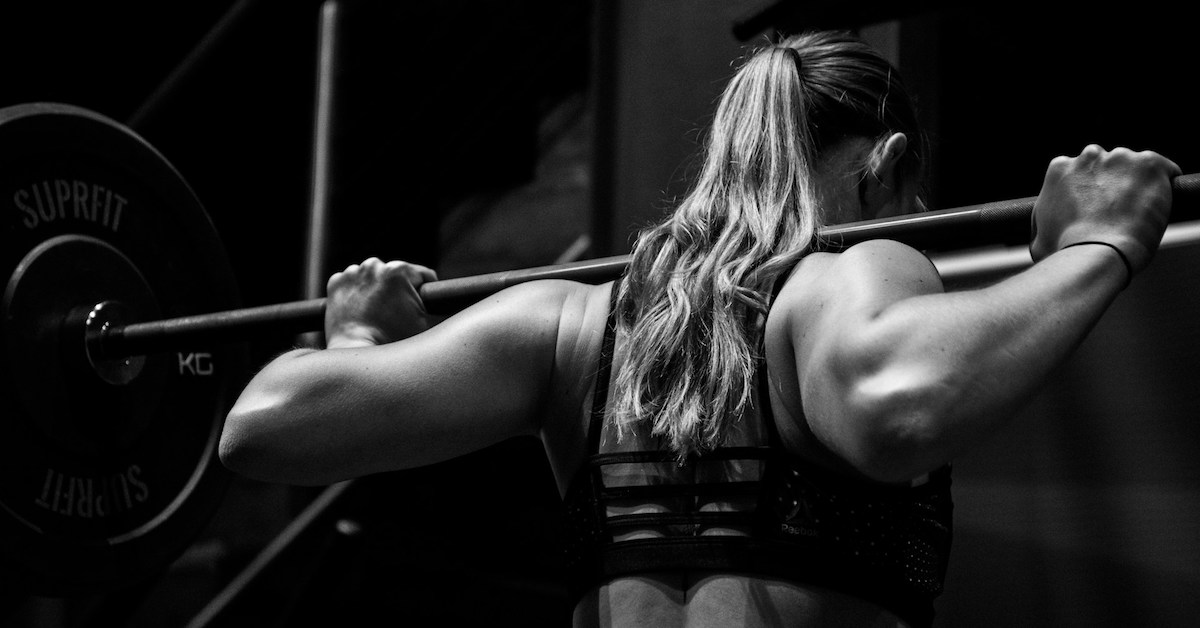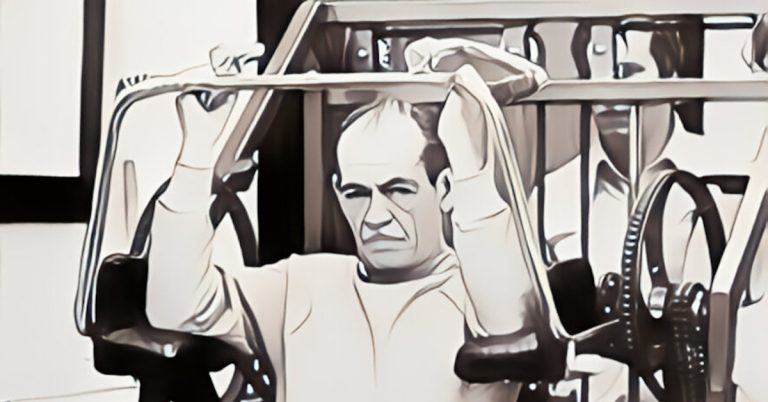If you’ve been in the muscle-building game for a while, you know you can’t stick with the same routine forever. No matter how well it works initially, progress will eventually stall—and when that happens, change is necessary. The problem is, you can’t just pick a random program from your favorite training website. Random routines lead to random results. Instead, you need a structured plan that follows a logical progression from your previous routine.
Research shows that alternating between periods of higher volume (extensive phase) and higher intensity (intensive phase) is one of the most effective approaches for sustained gains.
Below are two programs from my book Mass Explosion that apply this extensive-intensive wave. Each workout follows this format:
Sequence. Exercise: Sets x Reps @ Tempo, Rest Interval
Both routines use double station training (e.g., A1, A2, B1, B2, etc.), where you perform one set of the first exercise, then one set of the second, alternating until all prescribed sets are completed. The tempo refers to the speed of execution, represented as a four-digit code (e.g., 4010), which indicates the duration (in seconds) of the eccentric, isometric, concentric, and final isometric phases. The rest interval is given in seconds—if listed as “10s,” that means you have exactly 10 seconds to transition between exercises.
Program 1 – Antagonist Supersets (Extensive Phase)
Day 1 – Shoulders, Back, and Chest
A1. Standing Mid-Grip Barbell Press: 3 x 6-8 @ 4010, 10s
A2. Close-Grip Chin-Up: 3 x 6-8 @ 4010, 180s
B1. 45-Degree Incline Neutral-Grip Dumbbell Press: 3 x 8-10 @ 3010, 10s
B2. Seated Mid-Neutral-Grip Cable Pulldown: 3 x 8-10 @ 3010, 150s
C1. Flat Pronated-Grip Dumbbell Press: 3 x 10-12 @ 2010, 10s
C2. Seated Rope Row to Neck: 3 x 10-12 @ 2010, 120s
D1. Bent-Over Cable Crossover: 3 x 12-15 @ 1010, 10s
D2. Seated Dumbbell Lateral Raise: 3 x 12-15 @ 1010, 90s
Day 2 – Legs and Abdominals
A1. Heels-Elevated Barbell Hack Squat: 3 x 6-8 @ 4010, 10s
A2. Seated Leg Curl: 3 x 6-8 @ 4010, 180s
B1. Bent-Knee Hex-Bar Deadlift: 3 x 8-10 @ 3010, 10s
B2. Decline Sit-Up: 3 x 8-10 @ 3010, 150s
C1. Reverse Hyperextension: 3 x 10-12 @ 2010, 10s
C2. Hanging Leg Raise: 3 x 10-12 @ 2010, 120s
D1. Seated Calf Press: 3 x 12-15 @ 1010, 10s
D2. Seated Tibialis Raise: 3 x 12-15 @ 1010, 90s
Day 3 – Arms
A1. Standing Reverse-Grip EZ-Bar Curl: 3 x 6-8 @ 4010, 10s
A2. Tiger Bend Push-Up: 3 x 6-8 @ 4010, 180s
B1. Seated Midline Hammer Curl: 3 x 8-10 @ 3010, 10s
B2. Standing Rope Pressdown: 3 x 8-10 @ 3010, 150s
C1. Standing Twisting Rope Curl: 3 x 10-12 @ 2010, 10s
C2. Flat Twisting Dumbbell Triceps Extension: 3 x 10-12 @ 2010, 120s
D1. Seated Reverse-Grip EZ-Bar Wrist Curl: 3 x 12-15 @ 1010, 10s
D2. Seated Barbell Wrist Curl: 3 x 12-15 @ 1010, 90s
Why Supersets?
Pairing opposing muscle groups in supersets is a time-efficient way to train. Short rest intervals help boost growth hormone and testosterone levels, key drivers of muscle growth and fat loss. To maintain rep quality, lower the weight slightly after each set if needed.
Program 2 – Modern Isometronics (Intensive Phase)
Day 1 – Chest, Back, and Shoulders
A1. 45-Degree Incline Mid-Grip Barbell Press: 9 x 5 @ 2020, 120s
A2. Mid-Grip Pull-Up: 9 x 5 @ 2020, 120s
B1. Standing One-Arm Neutral-Grip Dumbbell Press: 3 x 8-10 @ 3010, 60s
B2. One-Arm Neutral-Grip Dumbbell Row: 3 x 8-10 @ 3010, 60s
Day 2 – Legs and Abdominals
A1. Back Squat: 9 x 5 @ 2020, 120s
A2. Prone Dorsiflexed Leg Curl: 9 x 5 @ 2020, 120s
B1. Standing Wide-Stance Good Morning: 3 x 8-10 @ 3010, 60s
B2. Kneeling Cable Crunch: 3 x 8-10 @ 3010, 60s
Day 3 – Arms
A1. Flat Close-Grip Barbell Press: 9 x 5 @ 2020, 120s
A2. Standing Mid-Grip Cable Curl: 9 x 5 @ 2020, 120s
B1. One-Arm Overhead Rope Triceps Extension: 3 x 8-10 @ 3010, 60s
B2. 45-Degree Incline Dumbbell Curl: 3 x 8-10 @ 3010, 60s
Why Isometronics?
This method combines partial-range movements with an intense isometric hold at the end of each set. The A exercises are divided into three ranges (top, middle, bottom), with three sets per range. For example, in the back squat, start with the top third (sets 1-3), then the middle (sets 4-6), and finally the bottom (sets 7-9). Each set ends with an 8-second isometric hold, which maximizes muscular tension and recruits high-threshold motor units.
If you compare both programs, the extensive phase has nearly twice as many total reps per workout, while the intensive phase allows for much heavier loads—both strategies are critical for long-term muscle growth.
The Takeaway
There are countless ways to structure a training program for muscle mass, but if you want long-term progress, your programming must be strategic. The key is to cycle between higher volume and higher intensity phases—catch that wave early in the year and ride it all the way to bigger, stronger muscles!
Note: For a full-year plan based on this principle, check out my book Mass Explosion: Blast Through Your Training Plateaus!

Mass Explosion: Blast Through Your Training Plateaus
Tired of spinning your wheels in the gym? Mass Explosion is your complete system for breaking plateaus and packing on muscle—naturally.
Developed by fitness expert John Paul Catanzaro, this guide combines cutting-edge science with proven methods to help you:
-
Build dense, powerful muscle without drugs.
-
Smash through training plateaus with advanced techniques.
-
Maximize recovery, nutrition, and supplementation for nonstop growth.
If you’re serious about size and strength, this book is your step-by-step roadmap to explosive gains.

Stretching Smarter: The Do’s and Don’ts for Maximum Flexibility
By JP CatanzaroOriginally published: September 23, 2014 – Updated for 2025 Want to boost flexibility, prevent injuries, and optimize performance?

Training Economy: How Weight Training Can Be Your All-in-One Fitness Solution
Recent research has once again confirmed what many in the weightlifting community already know: weight training isn’t just for building

4 Invaluable Lessons from Strength Training Pioneer Arthur Jones
Arthur Jones, a true visionary in the realm of strength training, left an unforgettable mark on the fitness industry with
follow
Error: No feed with the ID 2 found.
Please go to the Instagram Feed settings page to create a feed.
